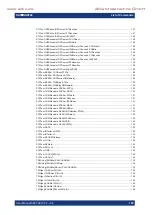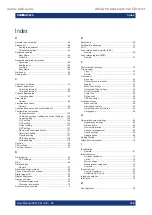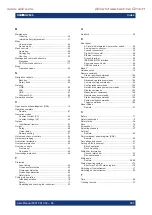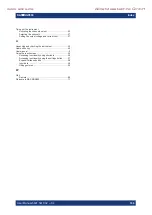
Additional Basics on Remote Control
R&S
®
NGP800
180
User Manual 5601.5610.02 ─ 04
Bit No.
Meaning
3
POWer (OPP Tripped)
This bit is set if an over power protection has tripped.
4
Temperature overrange
This bit is set if an over temperature occurs.
5 to 8
Not used
9
OVP Tripped
This bit is set if the over voltage protection has tripped.
10
Fuse Tripped
This bit is set if the fuse protection has tripped.
11
Fast Acq. Data Skipped
12
Ext.Triggered
13 to 14
Not used
15
This bit is always 0
Query of an instrument status
Each part of any status register can be read using queries.
There are two types of commands:
●
The common commands
*ESR?
,
*IDN?
,
*STB?
query the higher-level registers.
●
The commands of the
STATus
system query the SCPI registers
(
STATus:QUEStionable
)
The returned value is always a decimal number that represents the bit pattern of the
queried register. This number is evaluated by the controller program.
Decimal representation of a bit pattern (binary weights)
The STB and ESR registers contain 8 bits, the status registers 16 bits. The contents of
a status register are specified and transferred as a single decimal number. To make
this possible, each bit is assigned a weighted value. The decimal number is calculated
as the sum of the weighted values of all bits in the register that are set to 1.
Figure A-3: Decimal representation of a bit pattern
Error Queue
Each error state in the instrument leads to an entry in the error queue. The entries of
the error queue are detailed plain text error messages. You can look them up in the
error log or via remote control using
SYSTem:ERRor[:NEXT]?
. Each call of
Status Reporting System
www.allice.de
Allice Messtechnik GmbH









































